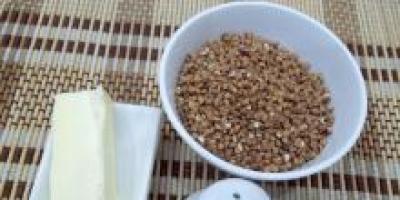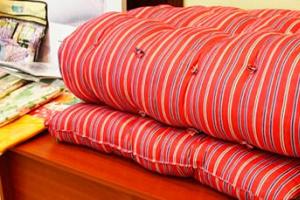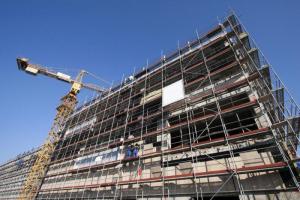The Letter of the Ministry of Finance of the Russian Federation dated November 16, 2004 No. 07-05-14/298 “On accounting for the release of inventories and methods for their evaluation” says:
“Accounting Regulations “Accounting for Inventories” PBU 5/01, approved by Order of the Ministry of Finance of Russia dated 06/09/2001 No. 44n, establishes the rules for the formation in accounting of information about the organization’s inventories. Finished products are part of inventories intended for sale (the final result of the production cycle, assets completed by processing (assembly), the technical and quality characteristics of which comply with the terms of the contract or the requirements of other documents, in cases established by law). In this regard, when accounting for finished products, you should be guided by PBU 5/01.
The choice of one or another option for evaluating finished products in current accounting, as well as the option for accounting for the release of finished products, is determined by the organization in its accounting policies.
The Department does not see a contradiction between paragraph 16 of PBU 5/01 and paragraph 73 of the Guidelines for accounting of inventories, approved by Order of the Ministry of Finance of Russia dated December 28, 2001 No. 119n.”
Clause 59 of the Regulations on Accounting and Financial Reporting establishes the following methods for assessing finished products:
At actual production cost;
According to the standard (planned) production cost, including costs associated with the use of fixed assets, raw materials, materials, fuel, energy, labor resources, and other costs of production in the production process;
According to the standard (planned) production cost, which is determined by the amount of direct costs.
If finished products are accounted for at actual production costs, then the receipt of products at the warehouse is reflected by the following posting:
In this case, the debit of the account takes into account the actual production cost of products in correspondence with the production cost accounts; the credit of account 40 “Output of products (works, services)” reflects the planned cost of finished products, which is written off to the debit of account 43 “Finished products”. At the end of the month, when the actual cost of production is fully formed, by comparing the debit and credit turnover of account 40 “Output of products (works, services)” the amount of deviations of the actual cost from the planned one is determined. The instructions for using the chart of accounts provide the following procedure for writing off deviation amounts.
If the credit turnover on account 40 “Output of products (works, services)” is greater than the debit turnover, that is, the actual cost is less than the planned cost and savings are identified, then a reversal entry is made for the amount of the deviation:
|
Account correspondence |
||
|
Debit |
Credit |
|
|
REVERSE! Savings reflected |
||
If the debit turnover in account 40 “Output of products (works, services)” is greater than the credit one, that is, the actual cost exceeds the planned cost (overexpenditure), an entry is made for the amount of the deviation:
|
Account correspondence |
||
|
Debit |
Credit |
|
|
Overspending reflected |
||
Thus, account 40 “Output of products (works, services)” is closed monthly and there is no balance on this account.
In accordance with PBU 5/01, finished products of a production organization are inventories intended for sale. Clause 5 of PBU 5/01 establishes that inventories are accepted for accounting at actual cost. If an organization independently produces inventories, then the actual cost is calculated based on all actual costs associated with their production (clause 7 of PBU 5/01). The organization carries out accounting and formation of production costs in the manner established for determining the cost of relevant types of products. Thus, the actual cost of finished products is a valuation of the natural resources, raw materials, materials, fuel, energy, fixed assets, labor resources, and so on used in the process of its production.
In accounting, finished products can be accounted for both at actual production costs and at standard (planned) costs. Depending on the method chosen by the production organization, the order in which finished products are reflected in the accounting accounts depends.
If the manufacturing organization decides to account for finished products at actual cost, then in this case, accounting for finished products will be carried out only using account 43 “Finished products”.
When accounting for finished products at actual cost, the receipt of the latter into the warehouse is reflected by the following posting:
| Account correspondence | Contents of operation | |
| Debit | Credit | |
| 43 | 20 | Finished products accepted for accounting |
Despite the fact that it is easier to reflect finished products at actual cost in accounting (one account is used), organizations do not often use this method. The actual cost of manufactured products can be formed only at the end of the reporting month, when all costs of production, both direct and indirect, have been determined. Therefore, when using this method, it is almost impossible to determine the cost of products as they are produced and transferred to the warehouse, which creates additional inconvenience if products manufactured within a month are sold in the same period. With this method of accounting, the cost at which products of the same type, manufactured at different times, are accepted for accounting may be different. Therefore, when selling or otherwise disposing of finished products, they must be written off in one of the following ways:
- at unit cost;
- at average cost;
- using the FIFO method;
- using the LIFO method.
Note!
Acceptance documents must be accompanied by a conclusion from a laboratory or technical control department on the quality of manufactured products.
Accounting for finished products at standard (planned) cost.
Production organizations in the food industry, as a rule, use the standard method of accounting for finished products, since it is its use that allows the revenue from the sale of products and its actual cost (which is determined only at the end of the month) to be correctly reflected in accounting.
If accounting for finished products is carried out at standard (planned) production costs, then the organization establishes accounting prices for products that remain constant for quite a long time and at which, within a month, products are accepted into the warehouse and written off from the warehouse when they are sold or otherwise disposed of. . At the end of the month, when all costs have been generated and the amount of work in progress has been determined, the difference between the planned and actual costs is determined. You can keep records of these deviations in two ways - with and without the use of account 40 “Output of products (works, services)”.
If account 40 “Release of products (works, services)” is not used, then when finished products arrive at the warehouse within a month, the following posting is made:
Debit 43 “Finished products” Credit 20 “Main production”– finished products arrived at the warehouse at planned prices.
When selling products within a month, writing off their cost is reflected by posting:
Debit 90 “Sales” subaccount “Cost of sales” Credit 43 “Finished products”– the cost of finished products in planned accounting prices is written off.
At the end of the month, the actual cost of production is determined, and the amount of deviations of the actual cost from the planned cost is reflected in the same accounts. Namely, additional postings if the actual cost exceeds the planned one, or reversal entries if the actual cost is less than the planned one. In this case, an adjustment is made to the cost of products accepted for accounting - for the entire amount of the deviation and the cost of products sold - in the share attributable to products sold.
Example 1.
Within a month, finished products were accepted into the warehouse of the Solnechny LLC meat processing plant, the planned cost of which was 750,000 rubles. The cost of products sold at planned prices amounted to 500,000 rubles. The total amount of costs recorded in the debit of account 20 “Main production” during the month is 900,000 rubles.
a) Suppose that the balance of work in progress at the end of the month is 180,000 rubles.
Then the actual cost of the finished product: 900,000 rubles – 180,000 rubles = 720,000 rubles.
The amount of deviation of the actual cost from the planned cost is 750,000 rubles – 720,000 rubles = 30,000 rubles.
The actual cost is less than the planned cost, so the amount of savings must be reversed.
The amount of deviation attributable to the balance of finished products in the warehouse: (30,000 rubles / 750,000 rubles) x 250,000 rubles = 10,000 rubles.
Actual cost of products sold: 500,000 rubles – 20,000 rubles = 480,000 rubles.
Balance of finished products in the warehouse (at actual cost): 720,000 – 480,000 = 240,000 rubles.
Account correspondence | Amount, rubles | ||
Debit | Credit |
||
| Within a month | |||
| In the end of the month | |||
02, 10, 70, 69, 25, 26 | |||
| REVERSE! The amount of deviation of the actual cost from the planned cost is taken into account | |||
| REVERSE! The amount of deviation of the actual cost from the planned cost in the share of products sold is taken into account | |||
Then, the actual cost of finished products: 900,000 rubles – 120,000 rubles = 780,000 rubles.
The amount of deviation of the actual cost from the planned cost is: 780,000 rubles – 750,000 rubles = 30,000 rubles.
The actual cost is higher than the planned cost, so additional entries need to be made for the amount of overrun.
The amount of deviation attributable to sold products: (30,000 rubles / 750,000 rubles) x 500,000 rubles = 20,000 rubles.
The amount of deviation attributable to the balance of finished products in the warehouse: (30,000 rubles / 750,000 rubles) x 2,500,000 = 10,000 rubles.
Actual cost of products sold: 500,000 rubles + 20,000 rubles = 520,000 rubles.
Balance of finished products in the warehouse (at actual cost): 780,000 rubles – 520,000 rubles = 260,000 rubles.
In the accounting of Solnechny LLC, these transactions are reflected as follows:
Account correspondence | Amount, rubles | ||
Debit | Credit |
||
| Within a month | |||
| Finished products were accepted into the warehouse at planned prices | |||
| The cost of products sold was written off at planned accounting prices. | |||
| In the end of the month | |||
02, 10, 70, 69, 25, 26 | Production costs taken into account | ||
| The amount of deviation of the actual cost from the planned cost is taken into account | |||
| The amount of deviation of the actual cost from the planned cost in the share of products sold is taken into account | |||
End of the example.
Note!
This method is a simplified version of calculating deviations, since in this case there was no balance of finished products in the warehouse at the beginning of the month.
In cases where there are balances of finished products at the beginning and end of the month, for the correct reflection and distribution of deviations, it is advisable to use the calculation method, the principle of which is specified in paragraph 206 of Guidelines No. 119n:
“If accounting for finished products is carried out at standard cost or at contract prices, then the difference between the actual cost and the cost of finished products at accounting prices is taken into account in the “Finished Products” account under a separate subaccount “Deviations of the actual cost of finished products from the accounting cost.” Deviations in this subaccount are taken into account by product range, either by individual groups of finished products, or by the organization as a whole. The excess of the actual cost over the accounting value is reflected in the debit of the specified subaccount and the credit of the cost accounting accounts. If the actual cost is lower than the book value, then the difference is reflected in a reversal entry.
Write-off of finished products (during shipment, issue, etc.) can be carried out at book value. At the same time, deviations related to finished products sold are written off to sales accounts (determined in proportion to their accounting value). Deviations related to the balances of finished products remain in the “Finished Products” account (sub-account “Deviations of the actual cost of finished products from the book value”).
Regardless of the method used to determine accounting prices, the total cost of finished goods (accounting cost plus variances) must equal the actual production cost of those products.”
Example 2.
The balance of finished products in the warehouse of the Solnechny LLC meat processing plant at the beginning of the month is 240,000 rubles at planned prices, the amount of deviations is 5,000 rubles (overexpenditure). Within a month, finished products arrived at the warehouse at planned prices in the amount of 750,000 rubles. The amount of costs for the production of finished products, recorded on account 20 “Main production”, amounted to 900,000 rubles, the balance of work in progress – 120,000 rubles. The planned cost of products sold is 500,000 rubles.
Actual cost of finished products: 900,000 rubles – 120,000 rubles = 780,000 rubles.
The amount of deviations for finished products transferred to the warehouse: 780,000 rubles – 750,000 rubles = 30,000 rubles.
Percentage of deviations for shipped products:
(5,000 rubles + 30,000 rubles) / (240,000 rubles + 750,000 rubles) x 100% = 3.54%.
The amount of deviations attributable to shipped products: 500,000 rubles x 3.54% = 17,700 rubles.
Actual cost of shipped products: 500,000 + 17,700 = 517,700 rubles.
Balance of finished products at the end of the month at actual cost:
(240,000 + 5,000) + (750,000 + 30,000) – (500,000 + 17,700) = 507,300 rubles, including:
planned cost: 240,000 + 750,000 – 500,000 = 490,000 rubles;
amount of deviations: 5,000 + 30,000 – 17,700 = 17,300 rubles.
End of the example.
We examined the accounting of finished products at standard (planned cost) without using account 40 “Output of products (works, services)”.
For convenience and clarity of identifying deviations of the actual cost from the planned cost, the organization can use account 40 “Output of products (works, services)”.
In this case, the debit of account 40 “Output of products (works, services)” takes into account the actual production cost of products in correspondence with the production cost accounts, and the credit of account 40 “Output of products (works, services)” reflects the planned cost of finished products, which written off to the debit of account 43 “Finished products”. At the end of the month, when the actual cost of production is fully formed, by comparing the debit and credit turnover of account 40 “Output of products (works, services)” the amount of deviations of the actual cost from the planned one is determined. The chart of accounts provides for the following procedure for writing off deviation amounts.
If the credit turnover on account 40 “Output of products (works, services)” is greater than the debit turnover, that is, the actual cost is less than the planned cost and savings are identified, then an accounting entry is made for the amount of the deviation using the “red reversal” method:
If the debit turnover in account 40 “Output of products (works, services)” is greater than the credit one, that is, the actual cost exceeds the planned cost (overexpenditure), the usual accounting entry is made for the amount of the deviation:
Debit 90 “Sales” subaccount “Cost of sales” Credit 40 “Output of products (works, services)”.
Thus, account 40 “Output of products (works, services)” is closed monthly and there is no balance on this account.
Note!
The amounts of deviations are written off to account 90 “Sales” in full, regardless of the volume of product sales and thus increase or decrease the cost of products sold in the reporting period.
The balance of finished products in the warehouse in this case is taken into account at the planned cost.
Example 3.
The balance of finished products in the warehouse of the Solnechny LLC meat processing plant at the beginning of the month is 240,000 rubles at planned prices. Within a month, finished products arrived at the warehouse at planned prices in the amount of 750,000 rubles. The amount of costs for the production of finished products, recorded on account 20 “Main production”, amounted to 900,000 rubles, the balance of work in progress – 120,000 rubles. The planned cost of products sold is 500,000 rubles.
Account correspondence | Sum, rubles | ||
Debit | Credit |
||
10, 70, 69, 25, 26 | Costs of the current period are reflected | ||
| The actual production cost of the finished product is reflected (900,000 rubles – 120,000 rubles) | |||
| Finished products were accepted for accounting at planned accounting prices | |||
| Planned cost of goods sold is written off | |||
| Included in the cost of products sold (780,000 rubles – 750,000 rubles) is the amount of the identified deviation (overspend) | |||
The balance of finished products in the warehouse of Solnechny LLC at planned prices:
240,000 rubles + 750,000 rubles – 500,000 rubles = 490,000 rubles.
End of the example.
On the day the finished product is transferred to the warehouse, write off the amount of costs for manufacturing the product by posting:
Debit 43 Credit 20 (23, 29)
finished products produced by the main (auxiliary, servicing) production have been capitalized in the warehouse.
Example
Jupiter LLC produces lamps. The main production costs for the production of a batch of lamps amounted to 130,000 rubles. The assembly of lamps is carried out by auxiliary production. His expenses for assembling this batch of lamps amounted to 14,000 rubles.
Jupiter's accountant must make the following entries:
Debit 20 Credit 10 (69, 70...)
130,000 rub. - expenses of the main production for the production of lamps are reflected;
Debit 23 Credit 10 (69, 70...)
14,000 rub. - the costs of assembling lamps are reflected;
Debit 20 Credit 23
14,000 rub. - the cost of finished products includes the costs of auxiliary production;
Debit 43 Credit 20
144,000 rub. (130,000 + 14,000) - finished products are received into the warehouse.
Accounting for finished products at accounting prices (standard (planned) cost)
Finished products at accounting prices (standard (planned) cost) can be accounted for in two ways:
using account 40 “Output of products (works, services)”;
without using account 40 “Output of products (works, services)”.
In most cases, count 40 is used for mass (serial) production or a large range of products.
The standard cost of products (works, services) is calculated by the organization independently based on the consumption rates of materials, fuel, etc., necessary for the production of products (performance of work, provision of services).
The planned cost of products (works, services) is also established by the organization independently. Thus, the planned cost can be taken as the cost of products (works, services) according to the data of the previous reporting period.
Accounting for products (works, services) using account 40 Product accounting
If you use this method, then reflect the cost value (both standard and planned) of manufactured products on the credit of account 40.
After the products are manufactured and transferred to the warehouse, make an entry in accounting:
Debit 43 Credit 40
finished products are capitalized at standard (planned) cost.
When selling finished products reflected at standard cost, make the following entries:
Debit 62 Credit 90-1
revenue from the sale of finished products is reflected;
Debit 90-2 Credit 43
the standard (planned) cost of finished products is written off;
VAT is charged on proceeds from the sale of products.
The actual cost of manufactured products is taken into account in the debit of account 40.
The cost of products manufactured by the main (auxiliary, servicing) production should be recorded as follows:
Debit 40 Credit 20 (23, 29)
reflects the actual cost of products produced by the main (auxiliary, servicing) production.
As a rule, the standard (planned) cost of finished products does not coincide with its actual cost.
As a result, a debit or credit balance appears on account 40.
Therefore, when writing off products accounted for at book prices (planned cost), you also need to write off the difference (deviation) between the actual cost of the finished product and its book price.
Determine the amount of deviations to be written off using the formula:
┌───────────────────┐ ┌────────────┐ ┌──────────────────┐
│ Amount of deviations, │ │Accounting price│ │Percentage of deviation│
│subject to write-off│ │ products │ │actual cost-│
│ │ = │ │ x │product costs-│
│ │ │ │ │ tion from its accounting│
│ │ │ │ │prices │
└───────────────────┘ └────────────┘ └──────────────────┘
Calculate the percentage deviation of the actual cost of products from its book price as follows:
┌────────────────┐ ┌───────────────────┐ ┌─────────────────┐ ┌────┐
│Deviation percentage-│ │Deviation according to finished product-│ │Cost of finished product│ │ │
│research of actual│ │production on│ │products by│ │ │
│cost price │ │beginning of month + From-│ │registration price to│ │ │
│products from her│ │ready-made│ │beginning of the month │ │100 │
│accounting price │ = │products, post-│ : │+Cost │ x │ │
│ │ │drank to the warehouse in│ │ready │ │ │
│ │ │reporting month │ │products by│ │ │
│ │ │ │ │registration price,│ │ │
│ │ │ │ │received at│ │ │
│ │ │ │ │reporting warehouse│ │ │
│ │ │ │ │month │ │ │
└────────────────┘ └───────────────────┘ └─────────────────┘ └────┘
Write off the amount of deviations to the same accounts to which the cost of finished products at accounting prices is written off.
The debit balance on account 40 (overexpenditure) is written off monthly by posting:
Debit 90-2 Credit 40
the excess of the actual cost of manufactured products over its standard (planned) cost is written off.
The credit balance on account 40 (savings) is written off monthly by a reversal entry:
Debit 90-2 Credit 40
the excess of the standard (planned) cost of manufactured products over its actual cost was reversed.
Example
Bella LLC produced and sold 1,000 sets of glass wine glasses during the reporting period for a total amount of 118,000 rubles. (including VAT - 18,000 rubles). "Bella" reflects finished products at planned cost. The planned cost of one set is 70 rubles, the actual cost is 75 rubles.
The accountant of Bella LLC must make the following entries:
Debit 43 Credit 40
70,000 rub. (70 rub. x 1000 pcs.) - finished products are capitalized in the warehouse at the planned cost;
Debit 40 Credit 20
75,000 rub. (75 rub. x 1000 pcs.) - reflects the actual cost of finished products;
Debit 51 Credit 62
118,000 rub. - funds received from customers;
Debit 62 Credit 90-1
118,000 rub. - revenue from the sale of products is reflected;
Debit 90-2 Credit 43
70,000 rub. - the planned cost of products sold is written off;
Debit 90-3 Credit 68 subaccount "VAT calculations"
18,000 rub. - VAT has been calculated and must be paid to the budget;
Debit 90-2 Credit 40
5000 rub. (75,000 - 70,000) - the amount of excess of the actual cost of finished products over its planned cost is written off.
At the end of the month you need to make a note:
Debit 90-9 Credit 99
25,000 rub. (118,000 - 70,000 - 18,000 - 5000) - profit from the sale of products is reflected.
The GP itself is reflected in the account. 43, is considered a component of production inventories. SOE accounting is carried out at enterprises engaged in the production process, both independently carrying out sales and through third parties. Finished products are subject to subsequent resale, can be paid for, shipped, moved to storage, written off, released, and all this is reflected in accounting entries. In order to preserve them, an inventory is carried out, the results of which can also be seen in the postings. Costs are reflected at actual (final) or planned prices, which affects the results.
Accounting for GPs at actual cost
Postings for accounting for finished products at the actual cost of costs are entered in correspondence with the accounting account. 43.
Advice: It is most important to account for finished products at actual cost in small enterprises.
The cost includes:
- Material costs;
- Production costs;
- Depreciation of fixed assets that were directly involved in the creation of the release;
- Salaries of company employees.
The documental basis for postings at actual cost is considered to be the GP Release Certificate. The entries in the accounting reports look like this:
- Release of GP from the main production Dt 43 Kt 20;
- Capitalization from auxiliary (service) production Dt 43 Kt 23(29);
- G wholesale products, intended for sale at actual cost in accounting, reflected Dt 90.2 Kt 43.
The first posting shows the full receipt (release) of finished products from the workshops of the enterprise to the warehouse.
Attention! At the time of transfer of the GP to the warehouse, the actual cost cannot be determined. Its final value is calculated only at the end of the period, when all direct and indirect costs affecting the price are visible. At the end of the period, expenses are applied to the entire output proportionally. Manufactured in different periods, sold at the same cost, units of production may have different exact actual cost.
Accounting using this method becomes more complicated if, during the same period, manufactured products were sold and written off. For capitalization at the warehouse, two delivery notes are drawn up.
Postings at standard prices are recorded using an account. 43 and its specific sub-account for deviations of prices planned at the enterprise from the actual cost .
Accounting for “Finished Products” at standard prices
If accounting for the production of finished products at actual cost is carried out using only 43 accounts in accounting entries, then according to the plan, entries are added using the 40th account. In this case, the 43rd account can be used with clarifying subaccounts. Using account 40, you can see the difference between the actual cost and the planned cost.
This method is convenient to use for enterprises with a large list of products.
Postings according to the planned cost of accounting for GP:
- Transfer of GP to warehousing at accounting prices (planned) Debit 40 Credit 20;
- Write-off of actually received cost Dt 43 Kt 40;
- Sending for sale Dt 90.2 Kt 43.
Based on the results of the reporting month, an adjustment can be made to the amount of the difference between the actual and planned cost, similar to the posting for accounting for the shipment of finished products only by account. 40 – Dt 90.2 Kt 40.
If the organization has GP balances at the end (beginning) of the period, then the calculation principle specified in Method Instructions No. 119n is applied.
Attention! At the end of the month, account 40 is closed, which remains with a zero balance.
Regardless of the chosen method, the entries for recording the capitalization of finished products at actual prices must be equal in amount to the amount for entries for the planned cost of expenses, taking into account any additional deviations made at the end of the period. The same applies to shipped shipments.
If the planned cost at the end of the month is higher than the actual cost, that is, savings have occurred, then the entries for accounting for finished products are “reversed”, that is, deducted.

Reflection of transactions for accounting of shipments of GP
Shipment can be carried out not only under a supply agreement, but also on other grounds, in connection with which the following entries are made:
- Dt. 91.2 Kt 43 GP transferred free of charge;
- Dt 79.2 Kt 43 GP was transferred to the company's divisions;
- Dt 45 Kt 43 provided under a commission agreement, agency agreement (commission agent);
- Dt 58.1 Kt 43 GP included in the Criminal Code;
- Dt 58.1 Kt 43 GP contributed as a share in the partnership;
- Dt 20 Kt 43 GP transferred to main production;
- Dt 25 (26) Kt 43 GP for the implementation of general economic needs;
- Dt 29 Kt 43 GP was allocated for the needs of production divisions.
Advice! For each posting to account 40, attach a calculation certificate, similar to calculating the accounting value.
Inventory
Accounting for the results of the inventory of finished products must be timely, and therefore prompt and reliable. After all, for the normal operation of an enterprise, it is necessary to know the real balances. The main transactions after inventory are capitalization of surplus and write-off of shortages. The shortage is reflected in Dt 94 Kt 43 accounts. And the surplus is attributed to Dt 43 and Kt 91.
GP balances at the enterprise are taken into account at the planned price.
The cost of production is the enterprise's costs for its production and sale, measured in monetary terms (Fig. 1). Without calculation and analysis of costs, it is impossible to make effective management decisions at all levels. Let's look at what types of costs there are and typical accounting entries.
Rice. 1. List of enterprise costs that form the cost.
Cost indicators can be planned and actual. Planned ones are calculated based on planned resource consumption rates. Actual expenses are determined after all expenses have actually been incurred.
Depending on the sequence of formation, the cost is divided:
- operational or technological;
- workshop;
- production;
- complete.
Technological
Technological cost serves to determine comparative economic efficiency when choosing the most effective of several technology upgrade options, and includes the costs of all technological operations with the product. It is formed on account 20 without taking into account general workshop and.
Shop
Workshop cost , in addition to technological costs, includes costs for organizing and managing the work of the workshop, which cannot be clearly attributed to a specific type of product. These costs are accumulated in the account and distributed monthly by type of product when calculating their workshop, production and full costs.
Production
Production cost , in addition to the shop floor, includes the costs of managing the enterprise (general business expenses), which accumulate in the account and are also written off monthly for certain types of products.
Full
IN full cost , in addition to production costs, non-production costs associated with are also included.
According to their economic essence, they distinguish between cost, determined by economic elements, or by costing items.
By summing up costs by economic elements, it is impossible to determine the costs of producing a specific product; therefore, costing items are used to determine the cost of individual types of products.
Reflection of cost on products
In general, the cost of production is formed using the following entries:
Postings for the release of finished products
The output of finished products can be accounted for by the accounting department at actual or standard cost. In the first case, the write-off goes directly to. When two entries are made:
| Account Dt | Kt account | Wiring description | Transaction amount | A document base |
| 20, | Finished products of the main, auxiliary and service shops and divisions were capitalized at actual cost | 10000 | ||
| 20, | The actual cost of finished products of the main, auxiliary and service departments and workshops is written off | 10000 | Certificate of calculation, certificate of release of finished products | |
| Standard cost of finished products written off (planned) | 10200 | Help-calculation |
How to reflect the sale of finished products in transactions
When accounting without using an account, the actual cost of production is written off to account 90.02. If an account is used to account for finished products at their standard cost, then another entry is made to correct deviations of the actual cost from the planned one.








